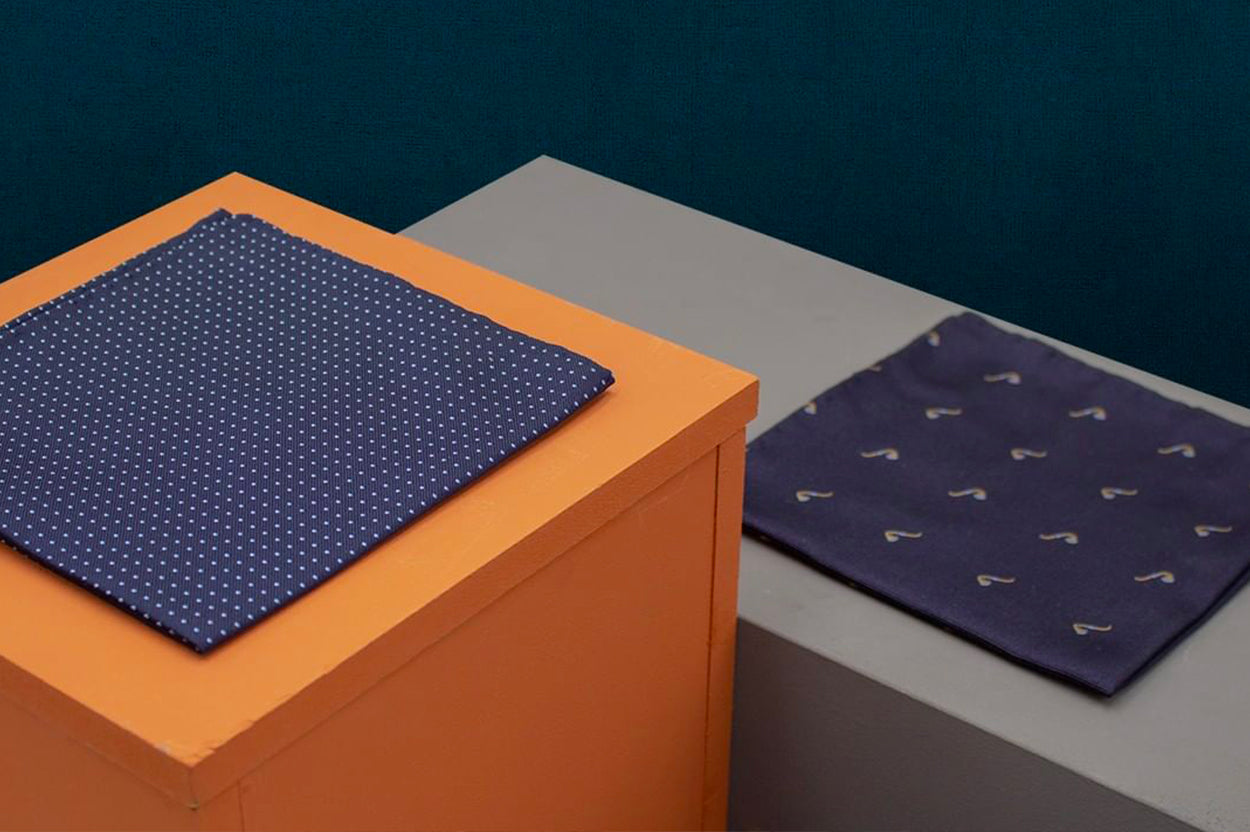Articolo: Cravatte al ritmo di musica

Cravatte al ritmo di musica
Sapreste citare una canzone italiana in cui viene nominata una cravatta? No? Eppure ce ne sono tante, e in ognuna questo capo assume un significato particolare. Abbiamo stilato per voi la playlist più "elegante" possibile

Cosa c’entrano le cravatte con la musica leggera? A prima vista, poco. Non vengono in mente tante associazioni fra il nostro capo di abbigliamento preferito e il mondo della musica, se si eccettua la sgargiante cravatta con i tasti di pianoforte bianchi e neri inventata dall’improbabile stilista Mugatu-Will Ferrell nella commedia cult Zoolander. Eppure, a ben guardare, di punti di contatto ce ne sono diversi. Nei look dei cantanti, certo, ma anche nei loro testi. E scorrendo questo elegantissimo canzoniere potremmo scoprire che gli artisti hanno saputo conferire alla cravatta una varietà di significati insospettabile. Appoggiamo quindi la puntina sul giradischi e iniziamo l’ascolto.

Un tocco di ironia
Per individuare il capostipite di tutti i brani “incravattati” dobbiamo risalire agli anni Cinquanta, a una filastrocca di cui per molto tempo si è persa la memoria e che è stata ricostruita di recente grazie al web. Il nodo alla cravatta, questo il titolo, gioca con il più classico dei luoghi comuni: quello che vuole l’uomo incapace di farsi il nodo da solo, tanto da avere bisogno dell’aiuto della moglie. Così, in un crescendo paradossale, la difficoltà di annodarsi la cravatta è il primo di una serie di guai che piovono sulla testa del malcapitato protagonista, pieno di ambizioni ma assai goffo nella vita quotidiana.
Se parliamo di ironia, Enzo Jannacci non è secondo a nessuno. E anche nel caso della sua Prendeva il treno la cravatta rappresenta un vano tentativo di darsi un tono. Trama: un operaio milanese si invaghisce di una collega, ma si vergogna a tal punto della sua umile condizione sociale da farle credere di recarsi tutti i giorni in azienda con il treno (in realtà il nostro si deve arrangiare con la bicicletta). E nella speranza di fare colpo sulla donna, l’operaio “ostentava una cravatta dell’Upim”, la stessa cravatta che, tristemente, penzolerà male annodata nell’ultima scena del brano.
Il trittico dell’ironia non poteva che chiudersi con un altro fuoriclasse, Paolo Conte, che in Per ogni cinquantennio, per descrivere i suoi malinconici protagonisti – che partecipano loro malgrado a una manifestazione di piazza con tanto di parata e discorso dell’avvocato – racconta che “ci sono certi nodi di cravatta che dietro c’è la mano di una moglie” (aggiungendo poi, malignamente, che “dietro ad ogni moglie c’è un amante”). Un infallibile colpo di pennello.

Usi e costumi
Grondano saggezza anche le parole di Franco Battiato: nella sua Venezia-Istanbul il cantautore catanese osserva che “un tempo per le feste si indossavano cravatte per questioni estetiche e sociali”. La cravatta come fatto culturale, insomma. In questo senso, fa sorridere pensare che lo stesso Battiato fu rimproverato per essersi presentato senza cravatta alla prima assemblea del Parlamento siciliano in occasione della sua breve esperienza come assessore al turismo. Del resto, gli artisti sono sempre stati un po’ allergici ai cerimoniali.
Ciò spiega anche perché qualcuno ha usato questo accessorio come metafora negativa, simbolo di una formalità eccessiva che mette un freno alla libertà. Il più critico in questo senso sembra essere Luca Carboni nel brano che si intitola proprio La cravatta. Per il sassolese Pierangelo Bertoli invece la cravatta è una prova di successo sociale, anche se questo non è sinonimo di felicità: in 1967 racconta di essere tornato dopo dieci anni nella casa paterna, e che il genitore "dapprima non era contento del mio comportamento, ma avevo una cravatta, e allora l'ho mostrata, pendente sotto al mento. L'ha guardata soddisfatto, e poi mi ha salutato, e quindi mi ha abbracciato".

Fortuna e seduzione
Ci sono poi i cantanti consapevoli che la cravatta può anche essere una formidabile arma di seduzione. In questo caso le parole più illuminanti sono quelle di Ultraleggero, brano di Gianni Morandi, una specie di manuale del bravo amante: “Quando (l'amore) ti trova fatti vedere ben vestito. L'apparenza è sostanza: niente cravatte sbagliate. Agli occhi delle donne i colori hanno molta importanza". Una formula che richiama le famose “cravatte sbagliate” che, ancora secondo Paolo Conte, sono uno dei motivi per cui pochi capivano il jazz: Sotto le stelle del jazz è un’altra canzone che ci ricorda quanto sia importante scegliere la cravatta giusta per le occasioni che la meritano, se non si vuole sembrare fuori posto.
Prima di concludere questa playlist, vale la pena di fare qualche menzione d’onore ad artisti che hanno usato anche la cravatta per meglio definire i personaggi delle loro canzoni: Francesco Guccini in Tango per due, Ivan Graziani in I lupi, la coppia Fabrizio De André-Francesco De Gregori in Le storie di ieri, o in tempi più recenti il rapper Fedez in Favorisca i sentimenti, tutti brani che vi lasciamo il piacere di scoprire.

La conclusione ufficiale di questa carrellata musicale la affidiamo però a un napoletano doc come Nino D’Angelo, che nel 1999 scrive Senza giacca e cravatta. La canzone parla delle difficoltà che deve affrontare un ragazzo di umili origini che sogna di sfondare con la sua musica (un tema evidentemente autobiografico). In uno dei picchi emozionali del pezzo, D’Angelo canta – in dialetto napoletano – “Quanta strada ho fatto per conquistarmi questa fortuna, senza giacca e cravatta”. Un modo per ricordarsi da dove è venuto, e quanto ha sudato per guadagnarsi un posto nel mondo.

